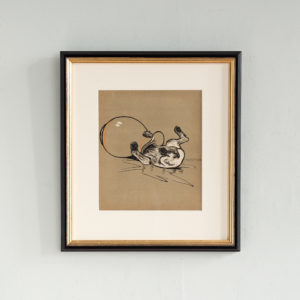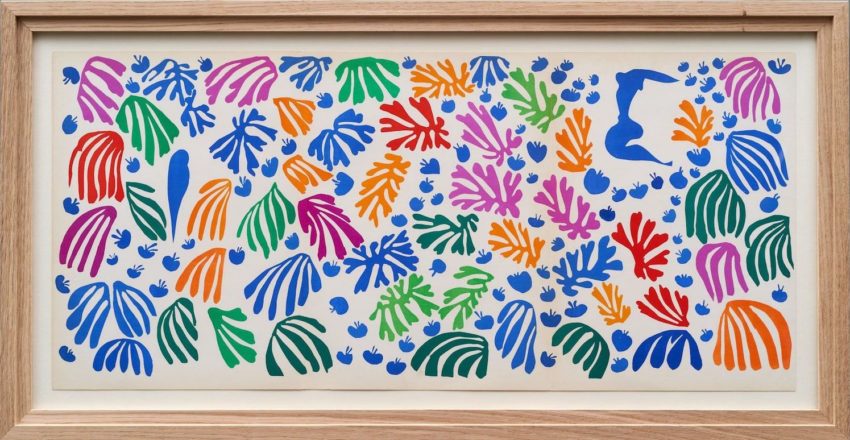
Art, Prints & Sculpture
Explore the full breadth of our decorative Works of Art. We have everything from numbered runs of prints and lithographs to original paintings and sketches. We specialise in London maps, including tube maps and plans of the City. Also lithographs by renowned Twentieth Century artists. You will find three dimensional sculpture in marble, bronze, plaster and more. Taxidermy and trophies are found alongside driftwood and weathervanes. Those in need of more functional pieces will discover shopkeepers and trade sign boards.
1418 items found
Page 6 of 15
-
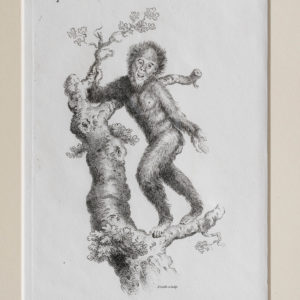
Monkeys – Oran Otan
£260 EachMonkeys – Oran Otan
The English Encyclopaedia was published in 1802 by George Kearsley and it gave an unusual insight into early 19th century new discoveries in zoology.£260 Each -
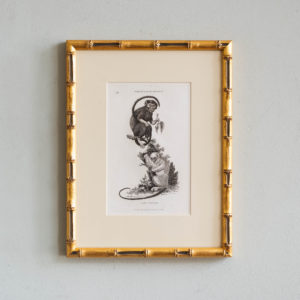
Monkeys – Great-Eared Monkey, and Fair Monkey,
£260 EachMonkeys – Great-Eared Monkey, and Fair Monkey,
The English Encyclopaedia was published in 1802 by George Kearsley and it gave an unusual insight into early 19th century new discoveries in zoology.£260 Each -
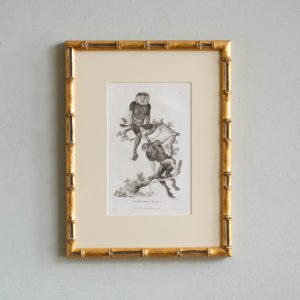
Monkeys – Cochinchina Monkey,
£260 EachMonkeys – Cochinchina Monkey,
The English Encyclopaedia was published in 1802 by George Kearsley and it gave an unusual insight into early 19th century new discoveries in zoology.£260 Each -
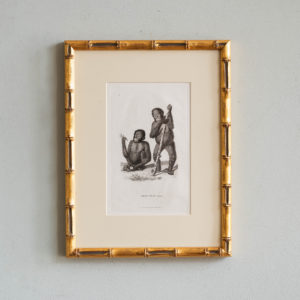
Monkeys – Oran Otan,
£260 EachMonkeys – Oran Otan,
The English Encyclopaedia was published in 1802 by George Kearsley and it gave an unusual insight into early 19th century new discoveries in zoology.£260 Each -
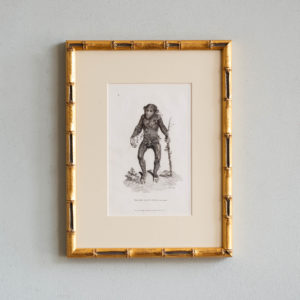
Monkeys – Black Oran-Otan,
£260 EachMonkeys – Black Oran-Otan,
The English Encyclopaedia was published in 1802 by George Kearsley and it gave an unusual insight into early 19th century new discoveries in zoology.£260 Each -
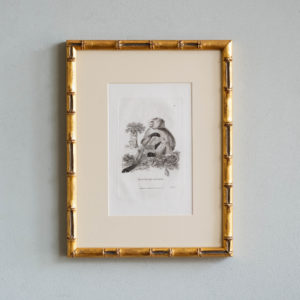
Monkeys – Dog-Faced Baboon,
£260 EachMonkeys – Dog-Faced Baboon,
The English Encyclopaedia was published in 1802 by George Kearsley and it gave an unusual insight into early 19th century new discoveries in zoology.£260 Each -
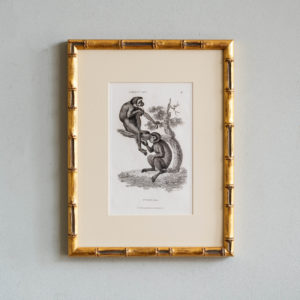
Monkeys – Pygmy Ape, and Alpinus Ape,
£260 EachMonkeys – Pygmy Ape, and Alpinus Ape,
The English Encyclopaedia was published in 1802 by George Kearsley and it gave an unusual insight into early 19th century new discoveries in zoology.£260 Each -
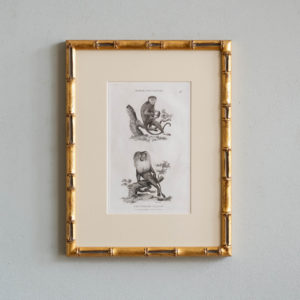
Monkeys – Hare-Lipped Monkey, and Lion-Tailed Monkey,
£260 EachMonkeys – Hare-Lipped Monkey, and Lion-Tailed Monkey,
The English Encyclopaedia was published in 1802 by George Kearsley and it gave an unusual insight into early 19th century new discoveries in zoology.£260 Each -
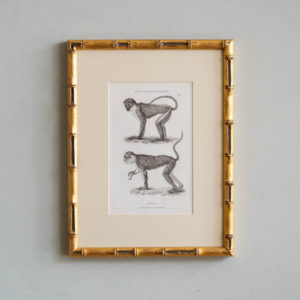
Monkeys – Spotted, or Diana Monkey and Mona,
£260 EachMonkeys – Spotted, or Diana Monkey and Mona,
The English Encyclopaedia was published in 1802 by George Kearsley and it gave an unusual insight into early 19th century new discoveries in zoology.£260 Each -
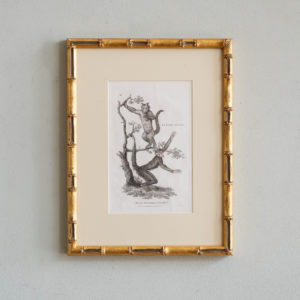
Monkeys – Horned Monkey and Four-Fingered Monkey
£260 EachMonkeys – Horned Monkey and Four-Fingered Monkey
The English Encyclopaedia was published in 1802 by George Kearsley and it gave an unusual insight into early 19th century new discoveries in zoology.£260 Each -
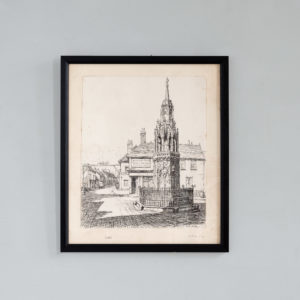
Waltham Cross by Hubert Williams (1905-1989)
£260Waltham Cross by Hubert Williams (1905-1989)
Hubert Williams was an accomplished artist and illustrator who had the confidence to include the detail of everyday life in his views. Signed. Framed£260 -
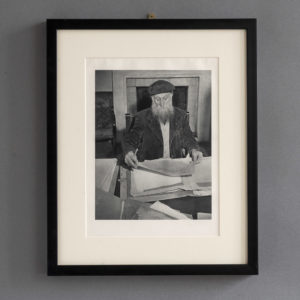
Photographs from Verve, December 1937. Portrait of Aristide Maillol
£250 eachPhotographs from Verve, December 1937. Portrait of Aristide Maillol
The Verve Review, from its very inception, was a purposefully luxurious art publication. It ran from 1937 to 1960, but for only 38 editions, due to the high degree of design and editorial work dedicated to each issue. Its editor was Stratis Eleftheriades, a Greek National who moved to Paris in the early thirties to take part in the growing Modernist movement, writing under the name of Teriade. As an art critic, patron and gallery owner he commissioned various individuals, artists, photographers and philosophers to contribute to it. Héliogravure is a process for printing photographs that was developed in the first half of the 19th century. It is a photo-mechanical process whereby a copper plate is grained and then coated with a light-sensitive gelatin tissue which had been exposed to a film positive, and then etched, resulting in a high-quality intaglio plate that can reproduce detailed continuous tones of a photograph.£250 each -
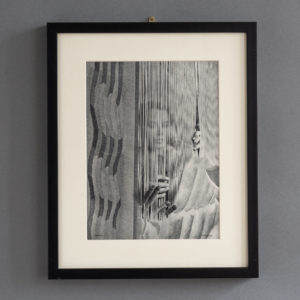
Photographs from Verve, December 1937. Gobelins / Makowska
£250 eachPhotographs from Verve, December 1937. Gobelins / Makowska
The Verve Review, from its very inception, was a purposefully luxurious art publication. It ran from 1937 to 1960, but for only 38 editions, due to the high degree of design and editorial work dedicated to each issue. Its editor was Stratis Eleftheriades, a Greek National who moved to Paris in the early thirties to take part in the growing Modernist movement, writing under the name of Teriade. As an art critic, patron and gallery owner he commissioned various individuals, artists, photographers and philosophers to contribute to it. Héliogravure is a process for printing photographs that was developed in the first half of the 19th century. It is a photo-mechanical process whereby a copper plate is grained and then coated with a light-sensitive gelatin tissue which had been exposed to a film positive, and then etched, resulting in a high-quality intaglio plate that can reproduce detailed continuous tones of a photograph.£250 each -
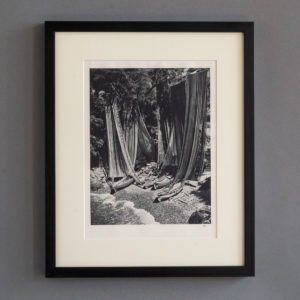
Photographs from Verve, December 1937. Gil
£250 eachPhotographs from Verve, December 1937. Gil
The Verve Review, from its very inception, was a purposefully luxurious art publication. It ran from 1937 to 1960, but for only 38 editions, due to the high degree of design and editorial work dedicated to each issue. Its editor was Stratis Eleftheriades, a Greek National who moved to Paris in the early thirties to take part in the growing Modernist movement, writing under the name of Teriade. As an art critic, patron and gallery owner he commissioned various individuals, artists, photographers and philosophers to contribute to it. Héliogravure is a process for printing photographs that was developed in the first half of the 19th century. It is a photo-mechanical process whereby a copper plate is grained and then coated with a light-sensitive gelatin tissue which had been exposed to a film positive, and then etched, resulting in a high-quality intaglio plate that can reproduce detailed continuous tones of a photograph.£250 each -
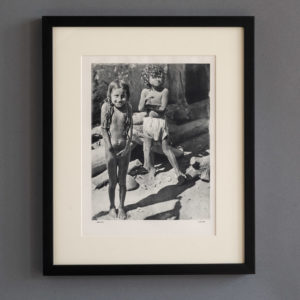
Photographs from Verve, December 1937. Henri Cartier-Bresson
£250 eachPhotographs from Verve, December 1937. Henri Cartier-Bresson
The Verve Review, from its very inception, was a purposefully luxurious art publication. It ran from 1937 to 1960, but for only 38 editions, due to the high degree of design and editorial work dedicated to each issue. Its editor was Stratis Eleftheriades, a Greek National who moved to Paris in the early thirties to take part in the growing Modernist movement, writing under the name of Teriade. As an art critic, patron and gallery owner he commissioned various individuals, artists, photographers and philosophers to contribute to it. Héliogravure is a process for printing photographs that was developed in the first half of the 19th century. It is a photo-mechanical process whereby a copper plate is grained and then coated with a light-sensitive gelatin tissue which had been exposed to a film positive, and then etched, resulting in a high-quality intaglio plate that can reproduce detailed continuous tones of a photograph.£250 each -
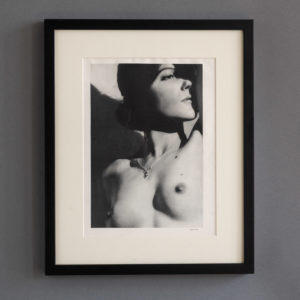
Photographs from Verve, December 1937. Man Ray
£250 eachPhotographs from Verve, December 1937. Man Ray
The Verve Review, from its very inception, was a purposefully luxurious art publication. It ran from 1937 to 1960, but for only 38 editions, due to the high degree of design and editorial work dedicated to each issue. Its editor was Stratis Eleftheriades, a Greek National who moved to Paris in the early thirties to take part in the growing Modernist movement, writing under the name of Teriade. As an art critic, patron and gallery owner he commissioned various individuals, artists, photographers and philosophers to contribute to it. Héliogravure is a process for printing photographs that was developed in the first half of the 19th century. It is a photo-mechanical process whereby a copper plate is grained and then coated with a light-sensitive gelatin tissue which had been exposed to a film positive, and then etched, resulting in a high-quality intaglio plate that can reproduce detailed continuous tones of a photograph.£250 each -
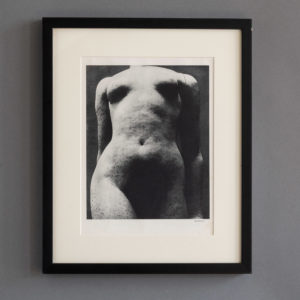
Photographs from Verve, December 1937. Erwin Blumenfeld
£250 eachPhotographs from Verve, December 1937. Erwin Blumenfeld
The Verve Review, from its very inception, was a purposefully luxurious art publication. It ran from 1937 to 1960, but for only 38 editions, due to the high degree of design and editorial work dedicated to each issue. Its editor was Stratis Eleftheriades, a Greek National who moved to Paris in the early thirties to take part in the growing Modernist movement, writing under the name of Teriade. As an art critic, patron and gallery owner he commissioned various individuals, artists, photographers and philosophers to contribute to it. Héliogravure is a process for printing photographs that was developed in the first half of the 19th century. It is a photo-mechanical process whereby a copper plate is grained and then coated with a light-sensitive gelatin tissue which had been exposed to a film positive, and then etched, resulting in a high-quality intaglio plate that can reproduce detailed continuous tones of a photograph.£250 each -
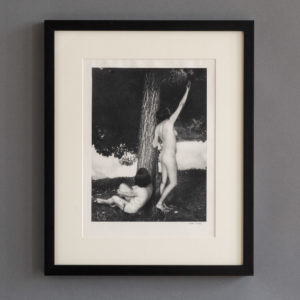
Photographs from Verve, December 1937. Nora Dumas
£250 eachPhotographs from Verve, December 1937. Nora Dumas
The Verve Review, from its very inception, was a purposefully luxurious art publication. It ran from 1937 to 1960, but for only 38 editions, due to the high degree of design and editorial work dedicated to each issue. Its editor was Stratis Eleftheriades, a Greek National who moved to Paris in the early thirties to take part in the growing Modernist movement, writing under the name of Teriade. As an art critic, patron and gallery owner he commissioned various individuals, artists, photographers and philosophers to contribute to it. Héliogravure is a process for printing photographs that was developed in the first half of the 19th century. It is a photo-mechanical process whereby a copper plate is grained and then coated with a light-sensitive gelatin tissue which had been exposed to a film positive, and then etched, resulting in a high-quality intaglio plate that can reproduce detailed continuous tones of a photograph.£250 each -
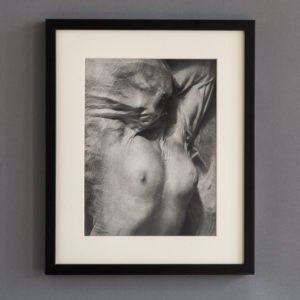
Photographs from Verve, December 1937. Erwin Blumenfeld
£250 eachPhotographs from Verve, December 1937. Erwin Blumenfeld
The Verve Review, from its very inception, was a purposefully luxurious art publication. It ran from 1937 to 1960, but for only 38 editions, due to the high degree of design and editorial work dedicated to each issue. Its editor was Stratis Eleftheriades, a Greek National who moved to Paris in the early thirties to take part in the growing Modernist movement, writing under the name of Teriade. As an art critic, patron and gallery owner he commissioned various individuals, artists, photographers and philosophers to contribute to it. Héliogravure is a process for printing photographs that was developed in the first half of the 19th century. It is a photo-mechanical process whereby a copper plate is grained and then coated with a light-sensitive gelatin tissue which had been exposed to a film positive, and then etched, resulting in a high-quality intaglio plate that can reproduce detailed continuous tones of a photograph.£250 each -
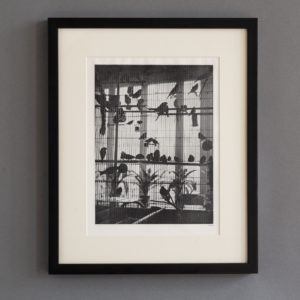
Photographs from Verve, December 1937. Brassaï
£250 eachPhotographs from Verve, December 1937. Brassaï
The Verve Review, from its very inception, was a purposefully luxurious art publication. It ran from 1937 to 1960, but for only 38 editions, due to the high degree of design and editorial work dedicated to each issue. Its editor was Stratis Eleftheriades, a Greek National who moved to Paris in the early thirties to take part in the growing Modernist movement, writing under the name of Teriade. As an art critic, patron and gallery owner he commissioned various individuals, artists, photographers and philosophers to contribute to it. Héliogravure is a process for printing photographs that was developed in the first half of the 19th century. It is a photo-mechanical process whereby a copper plate is grained and then coated with a light-sensitive gelatin tissue which had been exposed to a film positive, and then etched, resulting in a high-quality intaglio plate that can reproduce detailed continuous tones of a photograph.£250 each -
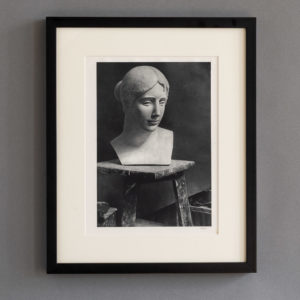
Photographs from Verve, December 1937. Brassaï
£250 eachPhotographs from Verve, December 1937. Brassaï
The Verve Review, from its very inception, was a purposefully luxurious art publication. It ran from 1937 to 1960, but for only 38 editions, due to the high degree of design and editorial work dedicated to each issue. Its editor was Stratis Eleftheriades, a Greek National who moved to Paris in the early thirties to take part in the growing Modernist movement, writing under the name of Teriade. As an art critic, patron and gallery owner he commissioned various individuals, artists, photographers and philosophers to contribute to it. Héliogravure is a process for printing photographs that was developed in the first half of the 19th century. It is a photo-mechanical process whereby a copper plate is grained and then coated with a light-sensitive gelatin tissue which had been exposed to a film positive, and then etched, resulting in a high-quality intaglio plate that can reproduce detailed continuous tones of a photograph.£250 each -
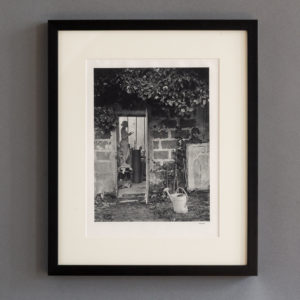
Photographs from Verve, December 1937. Brassaï
£250 eachPhotographs from Verve, December 1937. Brassaï
The Verve Review, from its very inception, was a purposefully luxurious art publication. It ran from 1937 to 1960, but for only 38 editions, due to the high degree of design and editorial work dedicated to each issue. Its editor was Stratis Eleftheriades, a Greek National who moved to Paris in the early thirties to take part in the growing Modernist movement, writing under the name of Teriade. As an art critic, patron and gallery owner he commissioned various individuals, artists, photographers and philosophers to contribute to it. Héliogravure is a process for printing photographs that was developed in the first half of the 19th century. It is a photo-mechanical process whereby a copper plate is grained and then coated with a light-sensitive gelatin tissue which had been exposed to a film positive, and then etched, resulting in a high-quality intaglio plate that can reproduce detailed continuous tones of a photograph.£250 each -
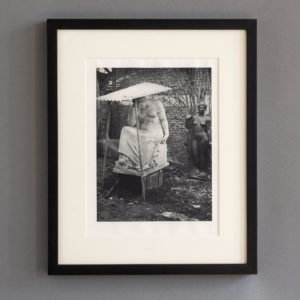
Photographs from Verve, December 1937. Brassaï
£250 eachPhotographs from Verve, December 1937. Brassaï
The Verve Review, from its very inception, was a purposefully luxurious art publication. It ran from 1937 to 1960, but for only 38 editions, due to the high degree of design and editorial work dedicated to each issue. Its editor was Stratis Eleftheriades, a Greek National who moved to Paris in the early thirties to take part in the growing Modernist movement, writing under the name of Teriade. As an art critic, patron and gallery owner he commissioned various individuals, artists, photographers and philosophers to contribute to it. Héliogravure is a process for printing photographs that was developed in the first half of the 19th century. It is a photo-mechanical process whereby a copper plate is grained and then coated with a light-sensitive gelatin tissue which had been exposed to a film positive, and then etched, resulting in a high-quality intaglio plate that can reproduce detailed continuous tones of a photograph.£250 each -
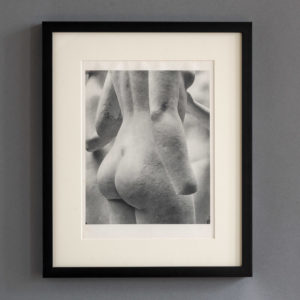
Photographs from Verve, December 1937. Brassaï
£250 eachPhotographs from Verve, December 1937. Brassaï
The Verve Review, from its very inception, was a purposefully luxurious art publication. It ran from 1937 to 1960, but for only 38 editions, due to the high degree of design and editorial work dedicated to each issue. Its editor was Stratis Eleftheriades, a Greek National who moved to Paris in the early thirties to take part in the growing Modernist movement, writing under the name of Teriade. As an art critic, patron and gallery owner he commissioned various individuals, artists, photographers and philosophers to contribute to it. Héliogravure is a process for printing photographs that was developed in the first half of the 19th century. It is a photo-mechanical process whereby a copper plate is grained and then coated with a light-sensitive gelatin tissue which had been exposed to a film positive, and then etched, resulting in a high-quality intaglio plate that can reproduce detailed continuous tones of a photograph.£250 each -

Photographs from Verve, December 1937. Brassaï
£250 eachPhotographs from Verve, December 1937. Brassaï
The Verve Review, from its very inception, was a purposefully luxurious art publication. It ran from 1937 to 1960, but for only 38 editions, due to the high degree of design and editorial work dedicated to each issue. Its editor was Stratis Eleftheriades, a Greek National who moved to Paris in the early thirties to take part in the growing Modernist movement, writing under the name of Teriade. As an art critic, patron and gallery owner he commissioned various individuals, artists, photographers and philosophers to contribute to it. Héliogravure is a process for printing photographs that was developed in the first half of the 19th century. It is a photo-mechanical process whereby a copper plate is grained and then coated with a light-sensitive gelatin tissue which had been exposed to a film positive, and then etched, resulting in a high-quality intaglio plate that can reproduce detailed continuous tones of a photograph.£250 each -
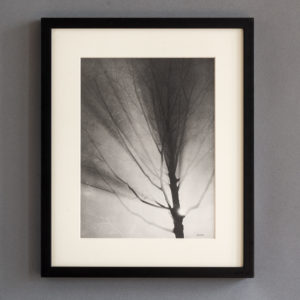
Photographs from Verve, December 1937. Brassaï
£250 eachPhotographs from Verve, December 1937. Brassaï
The Verve Review, from its very inception, was a purposefully luxurious art publication. It ran from 1937 to 1960, but for only 38 editions, due to the high degree of design and editorial work dedicated to each issue. Its editor was Stratis Eleftheriades, a Greek National who moved to Paris in the early thirties to take part in the growing Modernist movement, writing under the name of Teriade. As an art critic, patron and gallery owner he commissioned various individuals, artists, photographers and philosophers to contribute to it. Héliogravure is a process for printing photographs that was developed in the first half of the 19th century. It is a photo-mechanical process whereby a copper plate is grained and then coated with a light-sensitive gelatin tissue which had been exposed to a film positive, and then etched, resulting in a high-quality intaglio plate that can reproduce detailed continuous tones of a photograph.£250 each -
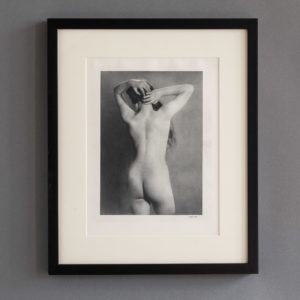
Photographs from Verve, December 1937. Man Ray
£250 eachPhotographs from Verve, December 1937. Man Ray
The Verve Review, from its very inception, was a purposefully luxurious art publication. It ran from 1937 to 1960, but for only 38 editions, due to the high degree of design and editorial work dedicated to each issue. Its editor was Stratis Eleftheriades, a Greek National who moved to Paris in the early thirties to take part in the growing Modernist movement, writing under the name of Teriade. As an art critic, patron and gallery owner he commissioned various individuals, artists, photographers and philosophers to contribute to it. Héliogravure is a process for printing photographs that was developed in the first half of the 19th century. It is a photo-mechanical process whereby a copper plate is grained and then coated with a light-sensitive gelatin tissue which had been exposed to a film positive, and then etched, resulting in a high-quality intaglio plate that can reproduce detailed continuous tones of a photograph.£250 each -
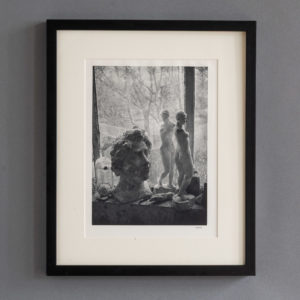
Photographs from Verve, December 1937. Brassaï
£250 eachPhotographs from Verve, December 1937. Brassaï
The Verve Review, from its very inception, was a purposefully luxurious art publication. It ran from 1937 to 1960, but for only 38 editions, due to the high degree of design and editorial work dedicated to each issue. Its editor was Stratis Eleftheriades, a Greek National who moved to Paris in the early thirties to take part in the growing Modernist movement, writing under the name of Teriade. As an art critic, patron and gallery owner he commissioned various individuals, artists, photographers and philosophers to contribute to it. Héliogravure is a process for printing photographs that was developed in the first half of the 19th century. It is a photo-mechanical process whereby a copper plate is grained and then coated with a light-sensitive gelatin tissue which had been exposed to a film positive, and then etched, resulting in a high-quality intaglio plate that can reproduce detailed continuous tones of a photograph.£250 each -
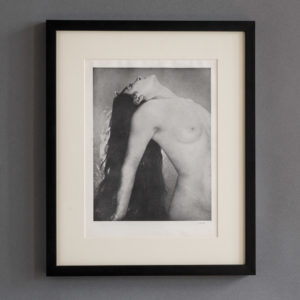
Photographs from Verve, December 1937. Man Ray
£250 eachPhotographs from Verve, December 1937. Man Ray
The Verve Review, from its very inception, was a purposefully luxurious art publication. It ran from 1937 to 1960, but for only 38 editions, due to the high degree of design and editorial work dedicated to each issue. Its editor was Stratis Eleftheriades, a Greek National who moved to Paris in the early thirties to take part in the growing Modernist movement, writing under the name of Teriade. As an art critic, patron and gallery owner he commissioned various individuals, artists, photographers and philosophers to contribute to it. Héliogravure is a process for printing photographs that was developed in the first half of the 19th century. It is a photo-mechanical process whereby a copper plate is grained and then coated with a light-sensitive gelatin tissue which had been exposed to a film positive, and then etched, resulting in a high-quality intaglio plate that can reproduce detailed continuous tones of a photograph.£250 each -
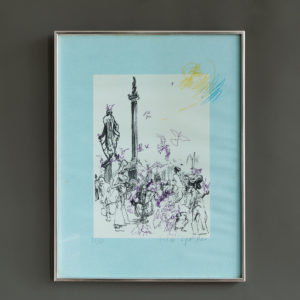
Feliks Topolski Trafalgar Square
£250Feliks Topolski Trafalgar Square
A framed Lithograph by the Anglo-Polish Expressionist artist Feliks Topolski RA showing view of Nelson's Column and Trafalgar Square.£250 -
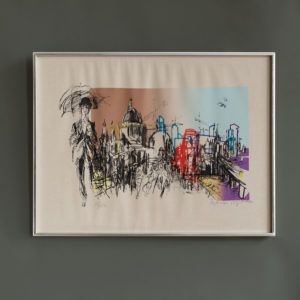
Feliks Topolski City
£250Feliks Topolski City
A framed Lithograph by the Anglo-Polish Expressionist artist Feliks Topolski RA showing view of the City of London seen from the South Bank of the Thames.£250 -
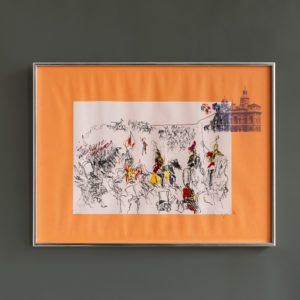
Feliks Topolski Trooping the Colour
£250Feliks Topolski Trooping the Colour
A framed Lithograph by the Anglo-Polish Expressionist artist Feliks Topolski RA showing the Trooping of the Colour at Horseguards Parade in London.£250 -
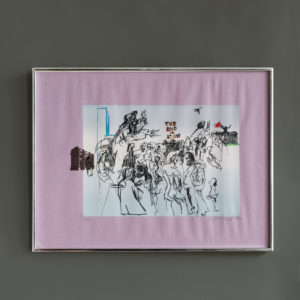
Feliks Topolski Speakers’ Corner
£250Feliks Topolski Speakers’ Corner
A framed Lithograph by the Anglo-Polish Expressionist artist Feliks Topolski RA showing a scene at Speakers Corner in London's Hyde Park.£250 -
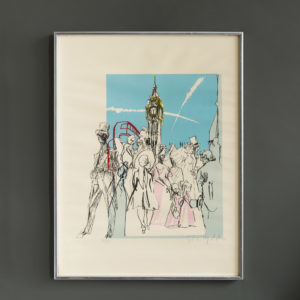
Feliks Topolski Westminster
£250Feliks Topolski Westminster
A framed Lithograph by the Anglo-Polish Expressionist artist Feliks Topolski RA showing a scene at Wesminster.£250 -
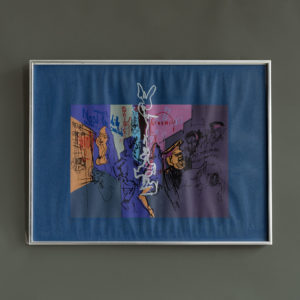
Feliks Topolski Piccadilly Circus
£250Feliks Topolski Piccadilly Circus
A framed Lithograph by the Anglo-Polish Expressionist artist Feliks Topolski RA showing a night scene at Picadilly Circus.£250 -
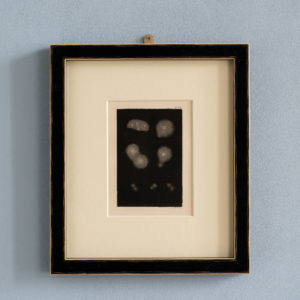
Views of the Architecture of the Heavens, by John Nichol
£250 eachViews of the Architecture of the Heavens, by John Nichol
John Pringle Nichol who, a Scottish Romantic astronomer, educator, and social reformer, who produced popular science books between 1846 and 1850. As the 5th Regius Professor of Astronomy at the University of Edinburgh , influenced the building of a large observatory beyond the city on Horselethill, paid for by the local citizens. In 1841, it was saved from financial collapse by the University. Part of the difficulties had arisen through Nichol's extravagance in purchasing unnecessarily expensive equipment. Eventually, Horselethill Observatory was kept in operation for 100 years. Nichol was a prolific writer and populariser of Astronomy; his books Contemplations on the Solar System and Views of the Architecture of the Heavens, the latter expanding on the Nebular Hypothesis, and one describing the discovery of Neptune£250 each -
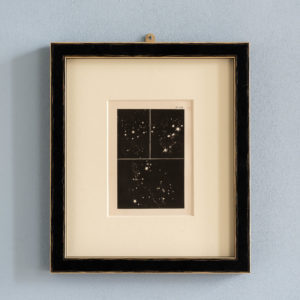
Views of the Architecture of the Heavens, by John Nichol
£250 eachViews of the Architecture of the Heavens, by John Nichol
John Pringle Nichol who, a Scottish Romantic astronomer, educator, and social reformer, who produced popular science books between 1846 and 1850. As the 5th Regius Professor of Astronomy at the University of Edinburgh , influenced the building of a large observatory beyond the city on Horselethill, paid for by the local citizens. In 1841, it was saved from financial collapse by the University. Part of the difficulties had arisen through Nichol's extravagance in purchasing unnecessarily expensive equipment. Eventually, Horselethill Observatory was kept in operation for 100 years. Nichol was a prolific writer and populariser of Astronomy; his books Contemplations on the Solar System and Views of the Architecture of the Heavens, the latter expanding on the Nebular Hypothesis, and one describing the discovery of Neptune£250 each -
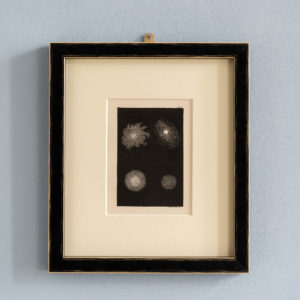
Views of the Architecture of the Heavens, by John Nichol
£250 eachViews of the Architecture of the Heavens, by John Nichol
John Pringle Nichol who, a Scottish Romantic astronomer, educator, and social reformer, who produced popular science books between 1846 and 1850. As the 5th Regius Professor of Astronomy at the University of Edinburgh , influenced the building of a large observatory beyond the city on Horselethill, paid for by the local citizens. In 1841, it was saved from financial collapse by the University. Part of the difficulties had arisen through Nichol's extravagance in purchasing unnecessarily expensive equipment. Eventually, Horselethill Observatory was kept in operation for 100 years. Nichol was a prolific writer and populariser of Astronomy; his books Contemplations on the Solar System and Views of the Architecture of the Heavens, the latter expanding on the Nebular Hypothesis, and one describing the discovery of Neptune£250 each -
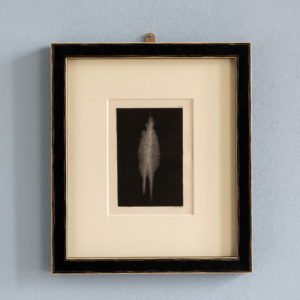
Views of the Architecture of the Heavens, by John Nichol
£250 eachViews of the Architecture of the Heavens, by John Nichol
John Pringle Nichol who, a Scottish Romantic astronomer, educator, and social reformer, who produced popular science books between 1846 and 1850. As the 5th Regius Professor of Astronomy at the University of Edinburgh , influenced the building of a large observatory beyond the city on Horselethill, paid for by the local citizens. In 1841, it was saved from financial collapse by the University. Part of the difficulties had arisen through Nichol's extravagance in purchasing unnecessarily expensive equipment. Eventually, Horselethill Observatory was kept in operation for 100 years. Nichol was a prolific writer and populariser of Astronomy; his books Contemplations on the Solar System and Views of the Architecture of the Heavens, the latter expanding on the Nebular Hypothesis, and one describing the discovery of Neptune£250 each -
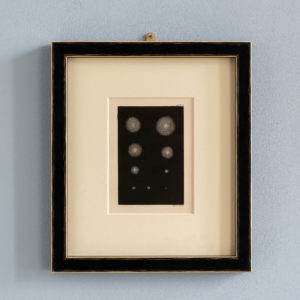
Views of the Architecture of the Heavens, by John Nichol
£250 eachViews of the Architecture of the Heavens, by John Nichol
John Pringle Nichol who, a Scottish Romantic astronomer, educator, and social reformer, who produced popular science books between 1846 and 1850. As the 5th Regius Professor of Astronomy at the University of Edinburgh , influenced the building of a large observatory beyond the city on Horselethill, paid for by the local citizens. In 1841, it was saved from financial collapse by the University. Part of the difficulties had arisen through Nichol's extravagance in purchasing unnecessarily expensive equipment. Eventually, Horselethill Observatory was kept in operation for 100 years. Nichol was a prolific writer and populariser of Astronomy; his books Contemplations on the Solar System and Views of the Architecture of the Heavens, the latter expanding on the Nebular Hypothesis, and one describing the discovery of Neptune£250 each -
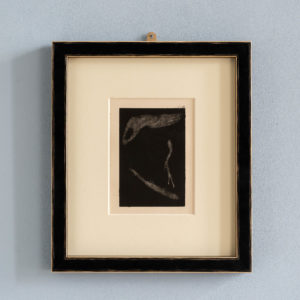
Views of the Architecture of the Heavens, by John Nichol
£250 eachViews of the Architecture of the Heavens, by John Nichol
John Pringle Nichol who, a Scottish Romantic astronomer, educator, and social reformer, who produced popular science books between 1846 and 1850. As the 5th Regius Professor of Astronomy at the University of Edinburgh , influenced the building of a large observatory beyond the city on Horselethill, paid for by the local citizens. In 1841, it was saved from financial collapse by the University. Part of the difficulties had arisen through Nichol's extravagance in purchasing unnecessarily expensive equipment. Eventually, Horselethill Observatory was kept in operation for 100 years. Nichol was a prolific writer and populariser of Astronomy; his books Contemplations on the Solar System and Views of the Architecture of the Heavens, the latter expanding on the Nebular Hypothesis, and one describing the discovery of Neptune£250 each -
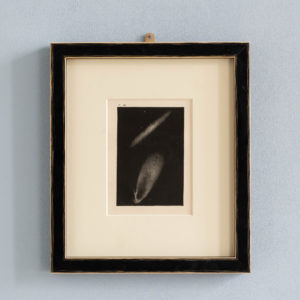
Views of the Architecture of the Heavens, by John Nichol
£250 eachViews of the Architecture of the Heavens, by John Nichol
John Pringle Nichol who, a Scottish Romantic astronomer, educator, and social reformer, who produced popular science books between 1846 and 1850. As the 5th Regius Professor of Astronomy at the University of Edinburgh , influenced the building of a large observatory beyond the city on Horselethill, paid for by the local citizens. In 1841, it was saved from financial collapse by the University. Part of the difficulties had arisen through Nichol's extravagance in purchasing unnecessarily expensive equipment. Eventually, Horselethill Observatory was kept in operation for 100 years. Nichol was a prolific writer and populariser of Astronomy; his books Contemplations on the Solar System and Views of the Architecture of the Heavens, the latter expanding on the Nebular Hypothesis, and one describing the discovery of Neptune£250 each -
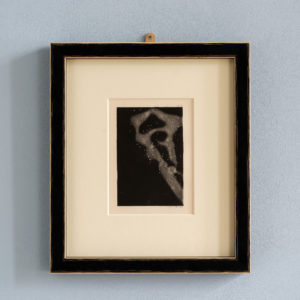
Views of the Architecture of the Heavens, by John Nichol
£250 eachViews of the Architecture of the Heavens, by John Nichol
John Pringle Nichol who, a Scottish Romantic astronomer, educator, and social reformer, who produced popular science books between 1846 and 1850. As the 5th Regius Professor of Astronomy at the University of Edinburgh , influenced the building of a large observatory beyond the city on Horselethill, paid for by the local citizens. In 1841, it was saved from financial collapse by the University. Part of the difficulties had arisen through Nichol's extravagance in purchasing unnecessarily expensive equipment. Eventually, Horselethill Observatory was kept in operation for 100 years. Nichol was a prolific writer and populariser of Astronomy; his books Contemplations on the Solar System and Views of the Architecture of the Heavens, the latter expanding on the Nebular Hypothesis, and one describing the discovery of Neptune£250 each -
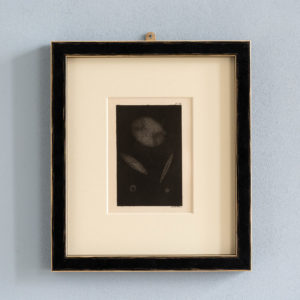
Views of the Architecture of the Heavens, by John Nichol
£250 eachViews of the Architecture of the Heavens, by John Nichol
John Pringle Nichol who, a Scottish Romantic astronomer, educator, and social reformer, who produced popular science books between 1846 and 1850. As the 5th Regius Professor of Astronomy at the University of Edinburgh , influenced the building of a large observatory beyond the city on Horselethill, paid for by the local citizens. In 1841, it was saved from financial collapse by the University. Part of the difficulties had arisen through Nichol's extravagance in purchasing unnecessarily expensive equipment. Eventually, Horselethill Observatory was kept in operation for 100 years. Nichol was a prolific writer and populariser of Astronomy; his books Contemplations on the Solar System and Views of the Architecture of the Heavens, the latter expanding on the Nebular Hypothesis, and one describing the discovery of Neptune£250 each -
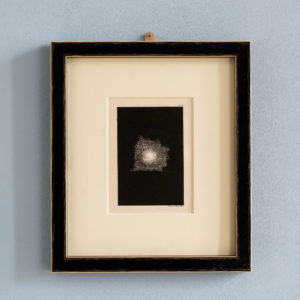
Views of the Architecture of the Heavens, by John Nichol
£250 eachViews of the Architecture of the Heavens, by John Nichol
John Pringle Nichol who, a Scottish Romantic astronomer, educator, and social reformer, who produced popular science books between 1846 and 1850. As the 5th Regius Professor of Astronomy at the University of Edinburgh , influenced the building of a large observatory beyond the city on Horselethill, paid for by the local citizens. In 1841, it was saved from financial collapse by the University. Part of the difficulties had arisen through Nichol's extravagance in purchasing unnecessarily expensive equipment. Eventually, Horselethill Observatory was kept in operation for 100 years. Nichol was a prolific writer and populariser of Astronomy; his books Contemplations on the Solar System and Views of the Architecture of the Heavens, the latter expanding on the Nebular Hypothesis, and one describing the discovery of Neptune£250 each -
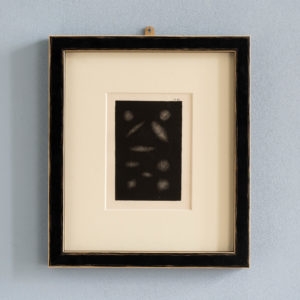
Views of the Architecture of the Heavens, by John Nichol
£250 eachViews of the Architecture of the Heavens, by John Nichol
John Pringle Nichol who, a Scottish Romantic astronomer, educator, and social reformer, who produced popular science books between 1846 and 1850. As the 5th Regius Professor of Astronomy at the University of Edinburgh , influenced the building of a large observatory beyond the city on Horselethill, paid for by the local citizens. In 1841, it was saved from financial collapse by the University. Part of the difficulties had arisen through Nichol's extravagance in purchasing unnecessarily expensive equipment. Eventually, Horselethill Observatory was kept in operation for 100 years. Nichol was a prolific writer and populariser of Astronomy; his books Contemplations on the Solar System and Views of the Architecture of the Heavens, the latter expanding on the Nebular Hypothesis, and one describing the discovery of Neptune£250 each -
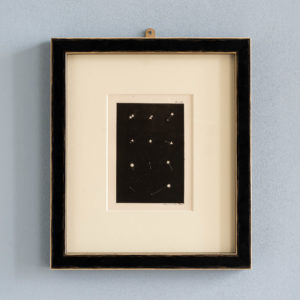
Views of the Architecture of the Heavens, by John Nichol
£250 eachViews of the Architecture of the Heavens, by John Nichol
John Pringle Nichol who, a Scottish Romantic astronomer, educator, and social reformer, who produced popular science books between 1846 and 1850. As the 5th Regius Professor of Astronomy at the University of Edinburgh , influenced the building of a large observatory beyond the city on Horselethill, paid for by the local citizens. In 1841, it was saved from financial collapse by the University. Part of the difficulties had arisen through Nichol's extravagance in purchasing unnecessarily expensive equipment. Eventually, Horselethill Observatory was kept in operation for 100 years. Nichol was a prolific writer and populariser of Astronomy; his books Contemplations on the Solar System and Views of the Architecture of the Heavens, the latter expanding on the Nebular Hypothesis, and one describing the discovery of Neptune£250 each -

Views of the Architecture of the Heavens, by John Nichol
£250 eachViews of the Architecture of the Heavens, by John Nichol
John Pringle Nichol who, a Scottish Romantic astronomer, educator, and social reformer, who produced popular science books between 1846 and 1850. As the 5th Regius Professor of Astronomy at the University of Edinburgh , influenced the building of a large observatory beyond the city on Horselethill, paid for by the local citizens. In 1841, it was saved from financial collapse by the University. Part of the difficulties had arisen through Nichol's extravagance in purchasing unnecessarily expensive equipment. Eventually, Horselethill Observatory was kept in operation for 100 years. Nichol was a prolific writer and populariser of Astronomy; his books Contemplations on the Solar System and Views of the Architecture of the Heavens, the latter expanding on the Nebular Hypothesis, and one describing the discovery of Neptune£250 each -
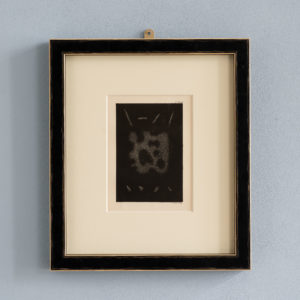
Views of the Architecture of the Heavens, by John Nichol
£250 eachViews of the Architecture of the Heavens, by John Nichol
John Pringle Nichol who, a Scottish Romantic astronomer, educator, and social reformer, who produced popular science books between 1846 and 1850. As the 5th Regius Professor of Astronomy at the University of Edinburgh , influenced the building of a large observatory beyond the city on Horselethill, paid for by the local citizens. In 1841, it was saved from financial collapse by the University. Part of the difficulties had arisen through Nichol's extravagance in purchasing unnecessarily expensive equipment. Eventually, Horselethill Observatory was kept in operation for 100 years. Nichol was a prolific writer and populariser of Astronomy; his books Contemplations on the Solar System and Views of the Architecture of the Heavens, the latter expanding on the Nebular Hypothesis, and one describing the discovery of Neptune£250 each -
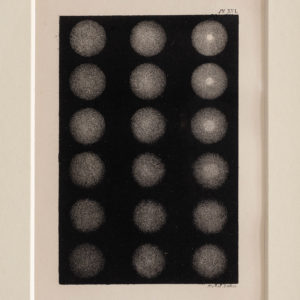
Views of the Architecture of the Heavens, by John Nichol
£250 eachViews of the Architecture of the Heavens, by John Nichol
John Pringle Nichol who, a Scottish Romantic astronomer, educator, and social reformer, who produced popular science books between 1846 and 1850. As the 5th Regius Professor of Astronomy at the University of Edinburgh , influenced the building of a large observatory beyond the city on Horselethill, paid for by the local citizens. In 1841, it was saved from financial collapse by the University. Part of the difficulties had arisen through Nichol's extravagance in purchasing unnecessarily expensive equipment. Eventually, Horselethill Observatory was kept in operation for 100 years. Nichol was a prolific writer and populariser of Astronomy; his books Contemplations on the Solar System and Views of the Architecture of the Heavens, the latter expanding on the Nebular Hypothesis, and one describing the discovery of Neptune£250 each -

Views of the Architecture of the Heavens, by John Nichol
£250 eachViews of the Architecture of the Heavens, by John Nichol
John Pringle Nichol who, a Scottish Romantic astronomer, educator, and social reformer, who produced popular science books between 1846 and 1850. As the 5th Regius Professor of Astronomy at the University of Edinburgh , influenced the building of a large observatory beyond the city on Horselethill, paid for by the local citizens. In 1841, it was saved from financial collapse by the University. Part of the difficulties had arisen through Nichol's extravagance in purchasing unnecessarily expensive equipment. Eventually, Horselethill Observatory was kept in operation for 100 years. Nichol was a prolific writer and populariser of Astronomy; his books Contemplations on the Solar System and Views of the Architecture of the Heavens, the latter expanding on the Nebular Hypothesis, and one describing the discovery of Neptune£250 each -
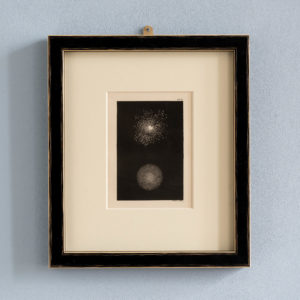
Views of the Architecture of the Heavens, by John Nichol
£250 eachViews of the Architecture of the Heavens, by John Nichol
John Pringle Nichol who, a Scottish Romantic astronomer, educator, and social reformer, who produced popular science books between 1846 and 1850. As the 5th Regius Professor of Astronomy at the University of Edinburgh , influenced the building of a large observatory beyond the city on Horselethill, paid for by the local citizens. In 1841, it was saved from financial collapse by the University. Part of the difficulties had arisen through Nichol's extravagance in purchasing unnecessarily expensive equipment. Eventually, Horselethill Observatory was kept in operation for 100 years. Nichol was a prolific writer and populariser of Astronomy; his books Contemplations on the Solar System and Views of the Architecture of the Heavens, the latter expanding on the Nebular Hypothesis, and one describing the discovery of Neptune£250 each -
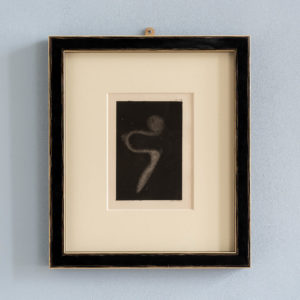
Views of the Architecture of the Heavens, by John Nichol
£250 eachViews of the Architecture of the Heavens, by John Nichol
John Pringle Nichol who, a Scottish Romantic astronomer, educator, and social reformer, who produced popular science books between 1846 and 1850. As the 5th Regius Professor of Astronomy at the University of Edinburgh , influenced the building of a large observatory beyond the city on Horselethill, paid for by the local citizens. In 1841, it was saved from financial collapse by the University. Part of the difficulties had arisen through Nichol's extravagance in purchasing unnecessarily expensive equipment. Eventually, Horselethill Observatory was kept in operation for 100 years. Nichol was a prolific writer and populariser of Astronomy; his books Contemplations on the Solar System and Views of the Architecture of the Heavens, the latter expanding on the Nebular Hypothesis, and one describing the discovery of Neptune£250 each -
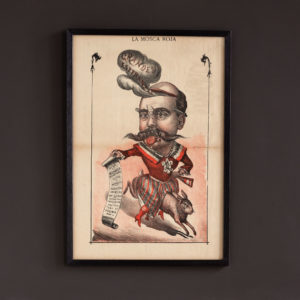
La Mosca Roja, Spanish political poster.
£250La Mosca Roja, Spanish political poster.
A framed Spanish political poster depicting a moustachoied figure, possibly Fransisco Serrano, 1st Duke of La Torre. He is shown dressed in harlequinade and mounted on a white hare proffering a scroll of reactionary and traditionalist demands while dark smoke, containing 'grand hopes' escapes from a breach in his skull. Cannons point out from behind his ears and The Pope is secreted between his eyes. Printed in Barcelona in the 1880s.£250 -
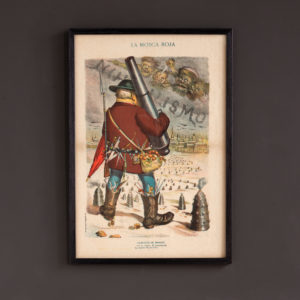
La Mosca Roja, ‘La Caminito de Moscou’
£250La Mosca Roja, ‘La Caminito de Moscou’
A framed chromolithographic Spanish political cartoon of the 1880s showing a heavily armed figure walking through a minefield towards the domes and towers of the Moscow Kremlin with a bag of Seville oranges on his hip. A cloud of disembodied demonic heads are ranged in a wintry sky while the word 'Nihilism' is written in smoke across the heavens. In 1881 Tsar Alexander II had been assassinated in St Petersburg by the Revolutionary Socialist and Nihilist secret society, Zemlya i volya.£250 -
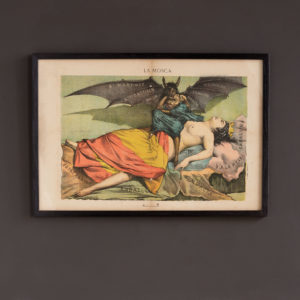
La Mosca
£250La Mosca
A framed Spanish political poster depicting a crowned female figure, draped in the flag of Spain, loomed over by a demonic ghoul.£250 -
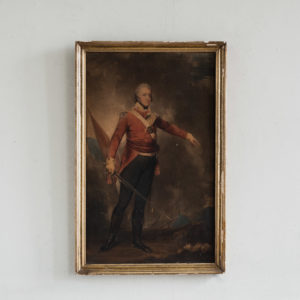
General The Earl of Mulgrave,
£250General The Earl of Mulgrave,
A hand coloured, framed mezzotint of Henry Phipps, the 1st Earl of Mulgrave after an original painting by John Hoppner. Baron (later Earl) Mulgrave served the King during the American Rebellion and in Europe during the French revolutionary wars. He later entred politics serving as Foreign Secretary and later as First Lord of the Admiralty where he was involved in the planning of the naval expedition against Copenhagen.£250 -
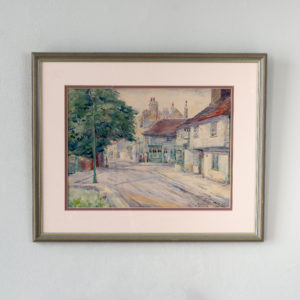
Little Church Street, Chiswick’
£250Little Church Street, Chiswick’
A signed watercolour by Josephine Ghilchick (née Matley Duddle) showing Church Lane in Chiswick, West London.£250 -
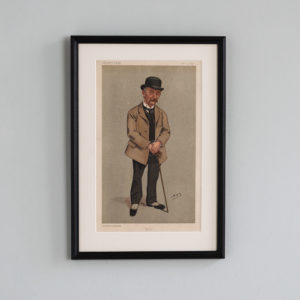
Tess,
£250Tess,
Framed Chromolithograph by Spy (Leslie Ward) depicting Thomas Hardy, novelist author, poet and architect. Writer of controversial and socially engaged novels such as Tess if the D'urbervilles, Jude the Obscure and popular classics such as Far from the Madding Crowd and The Mayor of Casterbridge. He lived to be appointed to the Order of Merit and his ashes are interred in Poets Corner, Westminster Abbey.£250 -
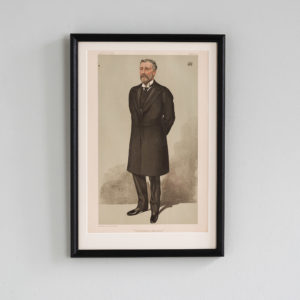
Cricket, Railways, and Agriculture,
£250Cricket, Railways, and Agriculture,
A framed chromolithograph by Spy (Sir Leslie Ward) picturing Charles George Lyttleton, 8th Viscount Cobham, Liberal MP for East Worcestershire. A first class cricketer who played 35 first class matches in his life, he was elected President of the Marylebone Cricket Club in 1888. Cobham was also a member of the Tennis Committee of the MCC and was responsible for framing standardised rules for the new sport of lawn tennis. These unified Laws of Lawn Tennis were published on 29 May 1875.£250 -
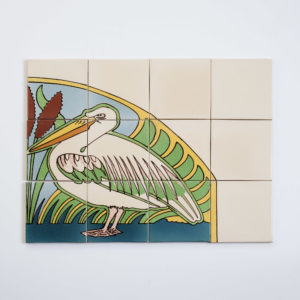
Pelican wall tile panel
£250 -
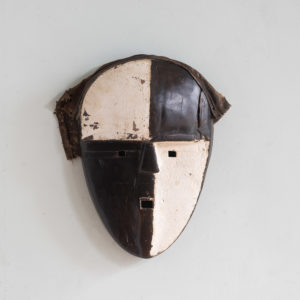
Kusu Nsembu mask
£250Kusu Nsembu mask
The Nsembu mask was used exclusively by members of the Nkunda Secret Society for the purposes of adult initiation and divination; the mask representing the diviners spirit. The chequered pattern may represent the interaction of opposites - day and night, man and woman, good and evil - within ones spiritual journey. It is also reminiscent of certain scarification practices. The Kusu people inhabit the Ituri rainforests, located in the northeastern part of the Congo.£250 -
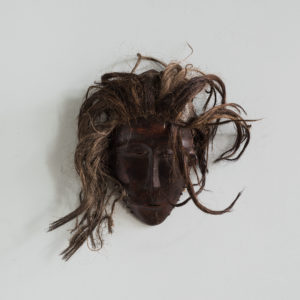
Tchokwe Pwo mask,
£245Tchokwe Pwo mask,
The Pwo is a classic Chokwe mask genre that honours their founding female ancestries as guardians of fertility and procreation. Chokwe masks were made and worn by men, often performed during the celebrations that mark a completion of initiation into adulthood and with means to honour women who had survived the difficulty of childbirth.£245 -
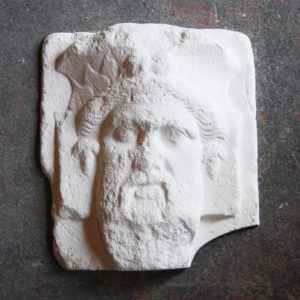
A relief cast plaster mask fragment of a Mesopotamian king,
£245A relief cast plaster mask fragment of a Mesopotamian king,
the male with ornate headwear and full beard,£245 -
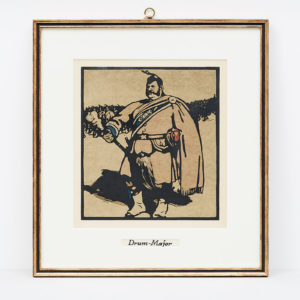
William Nicholson, London Types,
£245William Nicholson, London Types,
From a set of framed original woodblock prints, c1898. With original mounted poem relating to the image on reverse. "When William Nicholson designed his stylish 'London Types' in 1898 - that together with his 'Almanac of Twelve Sports' and 'An Illustrated Alphabet' were to make his reputation as a printmaker - his son Ben, who was to eclipse him entirely in the history of British Art through his Modernist works, was only five years old. While working within the culture of the British popular print, William Nickerson deliberately chose to use the coarse-grained side of the wood block in his wood cuts, in a style that owed more to Toulouse Lautrec and Japanese precedents than to native visual traditions - which give these prints an innovative quality, even as they might seem to be celebrating unchanging roles in British society. Although not strictly 'Cries of London,' some of these characters are familiar from earlier series of prints stretching back over the previous centrury and, recognising this, Nicholson portrays them as quaint curiosities from another age. In each case, the ironic doggerel by W.E. Henley that accompanied them poked fun at the anachronistic nature of these social stereotypes, through outlining the ambivalent existence of the individual subjects - whether the street hawker displaced in Kensington far from his East End home, or the aristocratic lady at Rotten Row challenged by her suburban counterparts, or the drunken Sandwich-man displaying moral texts, or the fifteenth generation Bluecoat boy at Charterhouse School in Smithfield now moved out to Horsham." - The Gentle Author.£245 -
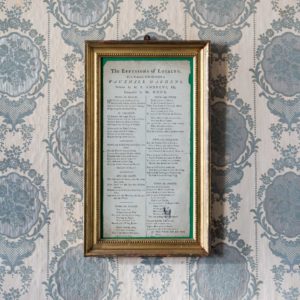
The Effusions of Loyalty, to be performed this evening at Vauxhall Gardens
£240The Effusions of Loyalty, to be performed this evening at Vauxhall Gardens
Written by M.P. Andrews, Esq. and composed by Mr. Hook£240 -
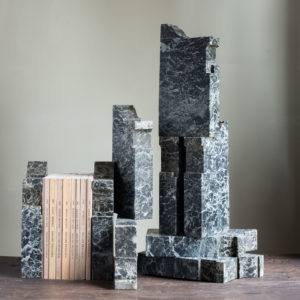
Pair of green marble bookends,
£240 per pairPair of green marble bookends,
each pair of the polished book-ends, rectangular in section and with mouldings to the top edge, some with chips.£240 per pair -
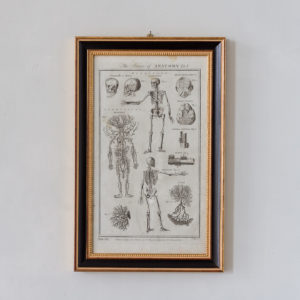
Original 18th century anatomy print,
£240Original 18th century anatomy print,
Copper engraving of the Science of Anatomy. Engraved by Royce and published by Alexander Hogg in1788. Framed.£240 -
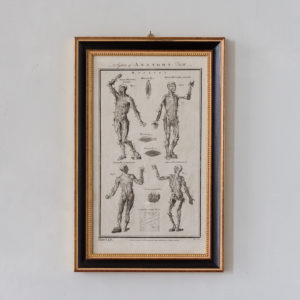
Original 18th century anatomy print,
£240Original 18th century anatomy print,
Copper engraving of the Science of Anatomy. Engraved by Royce and published by Alexander Hogg in1788. Framed.£240 -
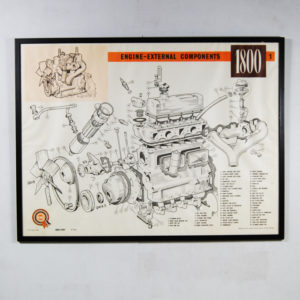
A series of English printed posters, automotive exploded-view diagrams,
£240 eachA series of English printed posters, automotive exploded-view diagrams,
the posters, landscape in format, demonstrating the components of the British-made family saloon: "Engine External Components". Rear Suspension and Drum Brakes" etc.£240 each -
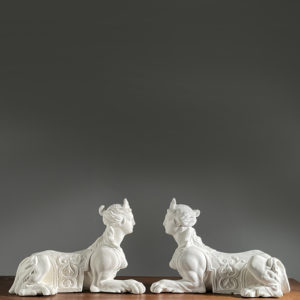
A pair of plaster Sphinx, cast in relief
£240 -
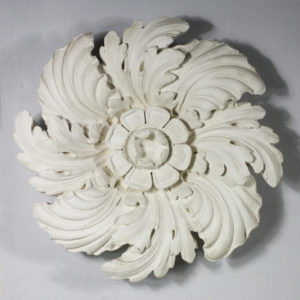
A cast plaster acanthine flowerhead roundel,
£230A cast plaster acanthine flowerhead roundel,
the spirally modelled leafy flowerhead emanating from a central boss,£230 -
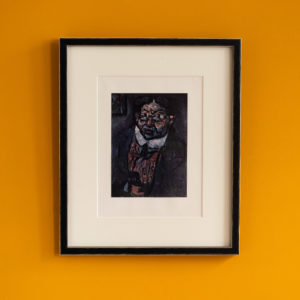
The works of George Roualt. ‘Mr. X’, 1911,
£225The works of George Roualt. ‘Mr. X’, 1911,
Although Georges Rouault a contemporary of Cubism, Expressionism and Fauvism, he never formally associated himself with any of these movements. As an independent he found his inspiration in the realities of everyday life and in religious subjects which he imbued with an authentic spirituality. Early in his career Parisian art dealer, Ambroise Vollard, bought the full contents of Georges Rouault’s studio. The artist agreed on the condition that he could finish his work at his own pace. Most of his works represented circus figures, religious subjects or landscapes.£225 -
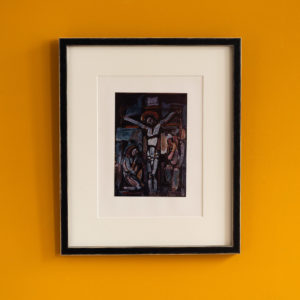
The works of George Roualt. ‘Crucifixion’, c.1918,
£225The works of George Roualt. ‘Crucifixion’, c.1918,
Although Georges Rouault a contemporary of Cubism, Expressionism and Fauvism, he never formally associated himself with any of these movements. As an independent he found his inspiration in the realities of everyday life and in religious subjects which he imbued with an authentic spirituality. Early in his career Parisian art dealer, Ambroise Vollard, bought the full contents of Georges Rouault’s studio. The artist agreed on the condition that he could finish his work at his own pace. Most of his works represented circus figures, religious subjects or landscapes.£225 -

The works of George Roualt. ‘Christ and Two Disciples’, c.1935,
£225The works of George Roualt. ‘Christ and Two Disciples’, c.1935,
Although Georges Rouault a contemporary of Cubism, Expressionism and Fauvism, he never formally associated himself with any of these movements. As an independent he found his inspiration in the realities of everyday life and in religious subjects which he imbued with an authentic spirituality. Early in his career Parisian art dealer, Ambroise Vollard, bought the full contents of Georges Rouault’s studio. The artist agreed on the condition that he could finish his work at his own pace. Most of his works represented circus figures, religious subjects or landscapes.£225 -
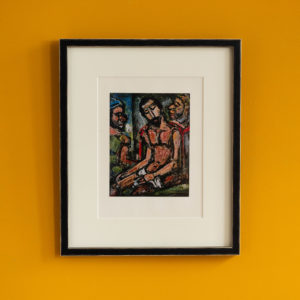
The works of George Roualt. ‘Christ Mocked by Soldiers’, 1932,
£225The works of George Roualt. ‘Christ Mocked by Soldiers’, 1932,
Although Georges Rouault a contemporary of Cubism, Expressionism and Fauvism, he never formally associated himself with any of these movements. As an independent he found his inspiration in the realities of everyday life and in religious subjects which he imbued with an authentic spirituality. Early in his career Parisian art dealer, Ambroise Vollard, bought the full contents of Georges Rouault’s studio. The artist agreed on the condition that he could finish his work at his own pace. Most of his works represented circus figures, religious subjects or landscapes.£225 -
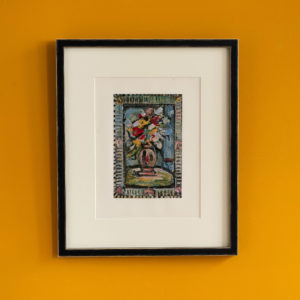
The works of George Roualt. ‘Bouquet’, c.1938,
£225The works of George Roualt. ‘Bouquet’, c.1938,
Although Georges Rouault a contemporary of Cubism, Expressionism and Fauvism, he never formally associated himself with any of these movements. As an independent he found his inspiration in the realities of everyday life and in religious subjects which he imbued with an authentic spirituality. Early in his career Parisian art dealer, Ambroise Vollard, bought the full contents of Georges Rouault’s studio. The artist agreed on the condition that he could finish his work at his own pace. Most of his works represented circus figures, religious subjects or landscapes.£225 -
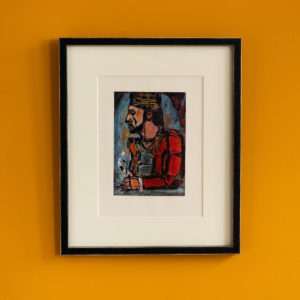
The works of George Roualt. ‘The Old King’, c.1916-36,
£225The works of George Roualt. ‘The Old King’, c.1916-36,
Although Georges Rouault a contemporary of Cubism, Expressionism and Fauvism, he never formally associated himself with any of these movements. As an independent he found his inspiration in the realities of everyday life and in religious subjects which he imbued with an authentic spirituality. Early in his career Parisian art dealer, Ambroise Vollard, bought the full contents of Georges Rouault’s studio. The artist agreed on the condition that he could finish his work at his own pace. Most of his works represented circus figures, religious subjects or landscapes.£225 -
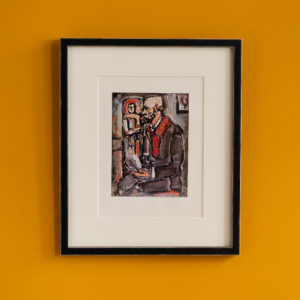
The works of George Roualt. ‘Portrait of Verlaine’, c.1938,
£225The works of George Roualt. ‘Portrait of Verlaine’, c.1938,
Although Georges Rouault a contemporary of Cubism, Expressionism and Fauvism, he never formally associated himself with any of these movements. As an independent he found his inspiration in the realities of everyday life and in religious subjects which he imbued with an authentic spirituality. Early in his career Parisian art dealer, Ambroise Vollard, bought the full contents of Georges Rouault’s studio. The artist agreed on the condition that he could finish his work at his own pace. Most of his works represented circus figures, religious subjects or landscapes.£225 -

The works of George Roualt. ‘The English Clown’, 1938-39,
£225The works of George Roualt. ‘The English Clown’, 1938-39,
Although Georges Rouault a contemporary of Cubism, Expressionism and Fauvism, he never formally associated himself with any of these movements. As an independent he found his inspiration in the realities of everyday life and in religious subjects which he imbued with an authentic spirituality. Early in his career Parisian art dealer, Ambroise Vollard, bought the full contents of Georges Rouault’s studio. The artist agreed on the condition that he could finish his work at his own pace. Most of his works represented circus figures, religious subjects or landscapes.£225 -
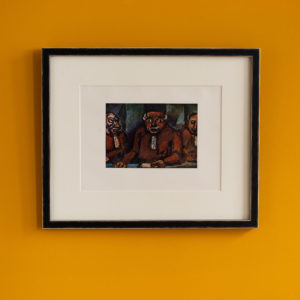
The works of George Roualt. ‘Three Judges’, 1918,
£225The works of George Roualt. ‘Three Judges’, 1918,
Although Georges Rouault a contemporary of Cubism, Expressionism and Fauvism, he never formally associated himself with any of these movements. As an independent he found his inspiration in the realities of everyday life and in religious subjects which he imbued with an authentic spirituality. Early in his career Parisian art dealer, Ambroise Vollard, bought the full contents of Georges Rouault’s studio. The artist agreed on the condition that he could finish his work at his own pace. Most of his works represented circus figures, religious subjects or landscapes.£225 -
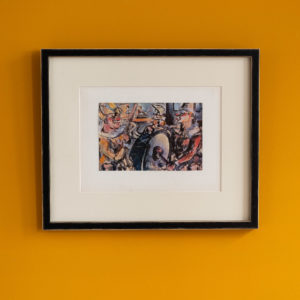
The works of George Roualt. ‘Parade’, 1907,
£225The works of George Roualt. ‘Parade’, 1907,
Although Georges Rouault a contemporary of Cubism, Expressionism and Fauvism, he never formally associated himself with any of these movements. As an independent he found his inspiration in the realities of everyday life and in religious subjects which he imbued with an authentic spirituality. Early in his career Parisian art dealer, Ambroise Vollard, bought the full contents of Georges Rouault’s studio. The artist agreed on the condition that he could finish his work at his own pace. Most of his works represented circus figures, religious subjects or landscapes.£225 -

The works of George Roualt. ‘The Humane Landscape’, 1928,
£225The works of George Roualt. ‘The Humane Landscape’, 1928,
Although Georges Rouault a contemporary of Cubism, Expressionism and Fauvism, he never formally associated himself with any of these movements. As an independent he found his inspiration in the realities of everyday life and in religious subjects which he imbued with an authentic spirituality. Early in his career Parisian art dealer, Ambroise Vollard, bought the full contents of Georges Rouault’s studio. The artist agreed on the condition that he could finish his work at his own pace. Most of his works represented circus figures, religious subjects or landscapes.£225 -
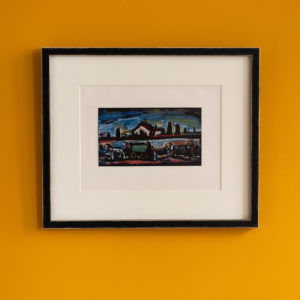
The works of George Roualt. ‘The Funeral’, 1930,
£225The works of George Roualt. ‘The Funeral’, 1930,
Although Georges Rouault a contemporary of Cubism, Expressionism and Fauvism, he never formally associated himself with any of these movements. As an independent he found his inspiration in the realities of everyday life and in religious subjects which he imbued with an authentic spirituality. Early in his career Parisian art dealer, Ambroise Vollard, bought the full contents of Georges Rouault’s studio. The artist agreed on the condition that he could finish his work at his own pace. Most of his works represented circus figures, religious subjects or landscapes.£225 -

The works of George Roualt. ‘Three Clowns’, 1917,
£225The works of George Roualt. ‘Three Clowns’, 1917,
Although Georges Rouault a contemporary of Cubism, Expressionism and Fauvism, he never formally associated himself with any of these movements. As an independent he found his inspiration in the realities of everyday life and in religious subjects which he imbued with an authentic spirituality. Early in his career Parisian art dealer, Ambroise Vollard, bought the full contents of Georges Rouault’s studio. The artist agreed on the condition that he could finish his work at his own pace. Most of his works represented circus figures, religious subjects or landscapes.£225 -
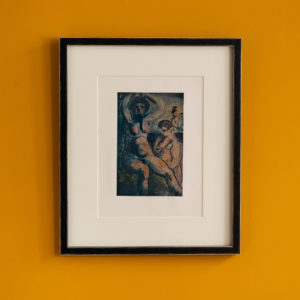
The works of George Roualt. ‘Nudes’, c.1907,
£225The works of George Roualt. ‘Nudes’, c.1907,
Although Georges Rouault a contemporary of Cubism, Expressionism and Fauvism, he never formally associated himself with any of these movements. As an independent he found his inspiration in the realities of everyday life and in religious subjects which he imbued with an authentic spirituality. Early in his career Parisian art dealer, Ambroise Vollard, bought the full contents of Georges Rouault’s studio. The artist agreed on the condition that he could finish his work at his own pace. Most of his works represented circus figures, religious subjects or landscapes.£225 -
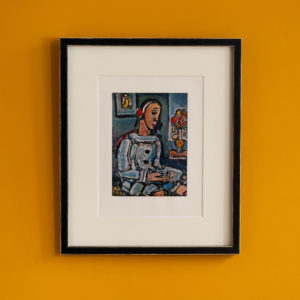
The works of George Roualt. ‘The Wise Pierrot, 1945’,
£225The works of George Roualt. ‘The Wise Pierrot, 1945’,
Although Georges Rouault a contemporary of Cubism, Expressionism and Fauvism, he never formally associated himself with any of these movements. As an independent he found his inspiration in the realities of everyday life and in religious subjects which he imbued with an authentic spirituality. Early in his career Parisian art dealer, Ambroise Vollard, bought the full contents of Georges Rouault’s studio. The artist agreed on the condition that he could finish his work at his own pace. Most of his works represented circus figures, religious subjects or landscapes.£225 -
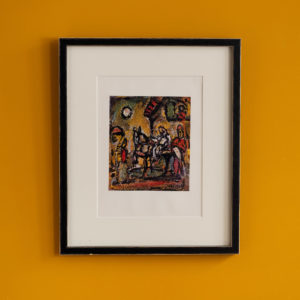
The works of George Roualt. ‘The Flight into Egypt, 1948’,
£225The works of George Roualt. ‘The Flight into Egypt, 1948’,
Although Georges Rouault a contemporary of Cubism, Expressionism and Fauvism, he never formally associated himself with any of these movements. As an independent he found his inspiration in the realities of everyday life and in religious subjects which he imbued with an authentic spirituality. Early in his career Parisian art dealer, Ambroise Vollard, bought the full contents of Georges Rouault’s studio. The artist agreed on the condition that he could finish his work at his own pace. Most of his works represented circus figures, religious subjects or landscapes.£225 -
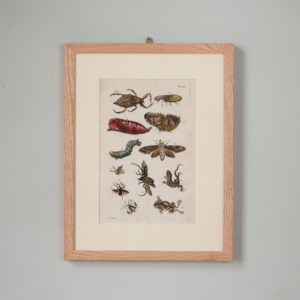
Natural History of Carolina, Florida and the Bahama Islands, published 1729 – 1747.
£225Natural History of Carolina, Florida and the Bahama Islands, published 1729 – 1747.
Mark Catesby was born in Essex to a family owned a farm and house, Holgate, in Sudbury, Suffolk. His acquaintance with the naturalist Reverend John Ray, a leading English naturalist of the late 17th century and co-author of an early classic study on birds started Catesby’s life-long becoming interest in natural history, which he went on to study in London. His life changes when in 1712, he arrived at Williamsburg, Virginia, accompanying his married sister Elizabeth Cocke and two of her children. During his seven-year stay in Virginia that Catesby developed a passionate in the native flora and fauna. He began collecting botanical specimens, especially seeds, and sending them to friends in England and he met William Byrd II, who was an amateur naturalist, a member of the colonial Council and a Fellow of the Royal Society. When he returned to England in 1719, influential members of the Royal Society, then chaired by Sir Isaac Newton, had learned of his work in the colonies. Led by William Sherard, “one of the most celebrated botanists of the age,” members began soliciting sponsors to finance Catesby for a botanical expedition to South Carolina. By 1722, Catesby was again crossing the Atlantic to further his work in the New World. Catesby, was one of the first people to recognize how natural and man-made destruction and depredation of a species’ habitat lead to extinction. He was the first to depict birds, in conjunction with environmentally relevant plants. He returned to England in 1726, and then spent the subsequent two decades years developing his work that would eventually be published as, "The Natural History of Carolina, Florida, and the Bahama Islands" It was first fully illustrated study of the natural history of North America and the most comprehensive to date. Working virtually alone, Catesby personally oversaw every aspect of the work’s production, even learning the difficult art of etching on copper plates. To finance this expensive printing project, Catesby sought subscriptions, offering his book in sections of 20 plates to be published every four months. Published in eleven sections and featuring more than 220 hand-coloured etchings. Published in eleven sections and featuring more than 220 hand-coloured etchings. He personally presented the first section to Her Majesty Queen Caroline in May 1729, and later he dedicated the first volume of the Natural History to her. Following a collapse, Mark Catesby died at his home on Old Street, London, on 23 December 1749, and he was buried in the churchyard of St Luke’s Church£225 -
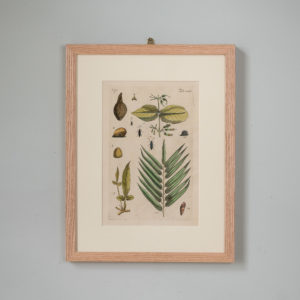
Natural History of Carolina, Florida and the Bahama Islands, published 1729 – 1747.
£225Natural History of Carolina, Florida and the Bahama Islands, published 1729 – 1747.
Mark Catesby was born in Essex to a family owned a farm and house, Holgate, in Sudbury, Suffolk. His acquaintance with the naturalist Reverend John Ray, a leading English naturalist of the late 17th century and co-author of an early classic study on birds started Catesby’s life-long becoming interest in natural history, which he went on to study in London. His life changes when in 1712, he arrived at Williamsburg, Virginia, accompanying his married sister Elizabeth Cocke and two of her children. During his seven-year stay in Virginia that Catesby developed a passionate in the native flora and fauna. He began collecting botanical specimens, especially seeds, and sending them to friends in England and he met William Byrd II, who was an amateur naturalist, a member of the colonial Council and a Fellow of the Royal Society. When he returned to England in 1719, influential members of the Royal Society, then chaired by Sir Isaac Newton, had learned of his work in the colonies. Led by William Sherard, “one of the most celebrated botanists of the age,” members began soliciting sponsors to finance Catesby for a botanical expedition to South Carolina. By 1722, Catesby was again crossing the Atlantic to further his work in the New World. Catesby, was one of the first people to recognize how natural and man-made destruction and depredation of a species’ habitat lead to extinction. He was the first to depict birds, in conjunction with environmentally relevant plants. He returned to England in 1726, and then spent the subsequent two decades years developing his work that would eventually be published as, "The Natural History of Carolina, Florida, and the Bahama Islands" It was first fully illustrated study of the natural history of North America and the most comprehensive to date. Working virtually alone, Catesby personally oversaw every aspect of the work’s production, even learning the difficult art of etching on copper plates. To finance this expensive printing project, Catesby sought subscriptions, offering his book in sections of 20 plates to be published every four months. Published in eleven sections and featuring more than 220 hand-coloured etchings. Published in eleven sections and featuring more than 220 hand-coloured etchings. He personally presented the first section to Her Majesty Queen Caroline in May 1729, and later he dedicated the first volume of the Natural History to her. Following a collapse, Mark Catesby died at his home on Old Street, London, on 23 December 1749, and he was buried in the churchyard of St Luke’s Church£225 -
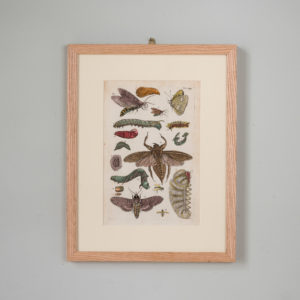
Natural History of Carolina, Florida and the Bahama Islands, published 1729 – 1747.
£225Natural History of Carolina, Florida and the Bahama Islands, published 1729 – 1747.
Mark Catesby was born in Essex to a family owned a farm and house, Holgate, in Sudbury, Suffolk. His acquaintance with the naturalist Reverend John Ray, a leading English naturalist of the late 17th century and co-author of an early classic study on birds started Catesby’s life-long becoming interest in natural history, which he went on to study in London. His life changes when in 1712, he arrived at Williamsburg, Virginia, accompanying his married sister Elizabeth Cocke and two of her children. During his seven-year stay in Virginia that Catesby developed a passionate in the native flora and fauna. He began collecting botanical specimens, especially seeds, and sending them to friends in England and he met William Byrd II, who was an amateur naturalist, a member of the colonial Council and a Fellow of the Royal Society. When he returned to England in 1719, influential members of the Royal Society, then chaired by Sir Isaac Newton, had learned of his work in the colonies. Led by William Sherard, “one of the most celebrated botanists of the age,” members began soliciting sponsors to finance Catesby for a botanical expedition to South Carolina. By 1722, Catesby was again crossing the Atlantic to further his work in the New World. Catesby, was one of the first people to recognize how natural and man-made destruction and depredation of a species’ habitat lead to extinction. He was the first to depict birds, in conjunction with environmentally relevant plants. He returned to England in 1726, and then spent the subsequent two decades years developing his work that would eventually be published as, "The Natural History of Carolina, Florida, and the Bahama Islands" It was first fully illustrated study of the natural history of North America and the most comprehensive to date. Working virtually alone, Catesby personally oversaw every aspect of the work’s production, even learning the difficult art of etching on copper plates. To finance this expensive printing project, Catesby sought subscriptions, offering his book in sections of 20 plates to be published every four months. Published in eleven sections and featuring more than 220 hand-coloured etchings. Published in eleven sections and featuring more than 220 hand-coloured etchings. He personally presented the first section to Her Majesty Queen Caroline in May 1729, and later he dedicated the first volume of the Natural History to her. Following a collapse, Mark Catesby died at his home on Old Street, London, on 23 December 1749, and he was buried in the churchyard of St Luke’s Church£225 -

Natural History of Carolina, Florida and the Bahama Islands, published 1729 – 1747.
£225Natural History of Carolina, Florida and the Bahama Islands, published 1729 – 1747.
Mark Catesby was born in Essex to a family owned a farm and house, Holgate, in Sudbury, Suffolk. His acquaintance with the naturalist Reverend John Ray, a leading English naturalist of the late 17th century and co-author of an early classic study on birds started Catesby’s life-long becoming interest in natural history, which he went on to study in London. His life changes when in 1712, he arrived at Williamsburg, Virginia, accompanying his married sister Elizabeth Cocke and two of her children. During his seven-year stay in Virginia that Catesby developed a passionate in the native flora and fauna. He began collecting botanical specimens, especially seeds, and sending them to friends in England and he met William Byrd II, who was an amateur naturalist, a member of the colonial Council and a Fellow of the Royal Society. When he returned to England in 1719, influential members of the Royal Society, then chaired by Sir Isaac Newton, had learned of his work in the colonies. Led by William Sherard, “one of the most celebrated botanists of the age,” members began soliciting sponsors to finance Catesby for a botanical expedition to South Carolina. By 1722, Catesby was again crossing the Atlantic to further his work in the New World. Catesby, was one of the first people to recognize how natural and man-made destruction and depredation of a species’ habitat lead to extinction. He was the first to depict birds, in conjunction with environmentally relevant plants. He returned to England in 1726, and then spent the subsequent two decades years developing his work that would eventually be published as, "The Natural History of Carolina, Florida, and the Bahama Islands" It was first fully illustrated study of the natural history of North America and the most comprehensive to date. Working virtually alone, Catesby personally oversaw every aspect of the work’s production, even learning the difficult art of etching on copper plates. To finance this expensive printing project, Catesby sought subscriptions, offering his book in sections of 20 plates to be published every four months. Published in eleven sections and featuring more than 220 hand-coloured etchings. Published in eleven sections and featuring more than 220 hand-coloured etchings. He personally presented the first section to Her Majesty Queen Caroline in May 1729, and later he dedicated the first volume of the Natural History to her. Following a collapse, Mark Catesby died at his home on Old Street, London, on 23 December 1749, and he was buried in the churchyard of St Luke’s Church£225 -
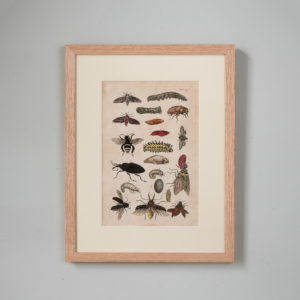
Natural History of Carolina, Florida and the Bahama Islands, published 1729 – 1747.
£225Natural History of Carolina, Florida and the Bahama Islands, published 1729 – 1747.
Mark Catesby was born in Essex to a family owned a farm and house, Holgate, in Sudbury, Suffolk. His acquaintance with the naturalist Reverend John Ray, a leading English naturalist of the late 17th century and co-author of an early classic study on birds started Catesby’s life-long becoming interest in natural history, which he went on to study in London. His life changes when in 1712, he arrived at Williamsburg, Virginia, accompanying his married sister Elizabeth Cocke and two of her children. During his seven-year stay in Virginia that Catesby developed a passionate in the native flora and fauna. He began collecting botanical specimens, especially seeds, and sending them to friends in England and he met William Byrd II, who was an amateur naturalist, a member of the colonial Council and a Fellow of the Royal Society. When he returned to England in 1719, influential members of the Royal Society, then chaired by Sir Isaac Newton, had learned of his work in the colonies. Led by William Sherard, “one of the most celebrated botanists of the age,” members began soliciting sponsors to finance Catesby for a botanical expedition to South Carolina. By 1722, Catesby was again crossing the Atlantic to further his work in the New World. Catesby, was one of the first people to recognize how natural and man-made destruction and depredation of a species’ habitat lead to extinction. He was the first to depict birds, in conjunction with environmentally relevant plants. He returned to England in 1726, and then spent the subsequent two decades years developing his work that would eventually be published as, "The Natural History of Carolina, Florida, and the Bahama Islands" It was first fully illustrated study of the natural history of North America and the most comprehensive to date. Working virtually alone, Catesby personally oversaw every aspect of the work’s production, even learning the difficult art of etching on copper plates. To finance this expensive printing project, Catesby sought subscriptions, offering his book in sections of 20 plates to be published every four months. Published in eleven sections and featuring more than 220 hand-coloured etchings. Published in eleven sections and featuring more than 220 hand-coloured etchings. He personally presented the first section to Her Majesty Queen Caroline in May 1729, and later he dedicated the first volume of the Natural History to her. Following a collapse, Mark Catesby died at his home on Old Street, London, on 23 December 1749, and he was buried in the churchyard of St Luke’s Church£225 -
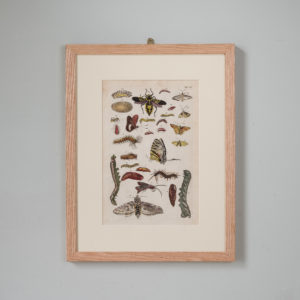
Natural History of Carolina, Florida and the Bahama Islands, published 1729 – 1747.
£225Natural History of Carolina, Florida and the Bahama Islands, published 1729 – 1747.
Mark Catesby was born in Essex to a family owned a farm and house, Holgate, in Sudbury, Suffolk. His acquaintance with the naturalist Reverend John Ray, a leading English naturalist of the late 17th century and co-author of an early classic study on birds started Catesby’s life-long becoming interest in natural history, which he went on to study in London. His life changes when in 1712, he arrived at Williamsburg, Virginia, accompanying his married sister Elizabeth Cocke and two of her children. During his seven-year stay in Virginia that Catesby developed a passionate in the native flora and fauna. He began collecting botanical specimens, especially seeds, and sending them to friends in England and he met William Byrd II, who was an amateur naturalist, a member of the colonial Council and a Fellow of the Royal Society. When he returned to England in 1719, influential members of the Royal Society, then chaired by Sir Isaac Newton, had learned of his work in the colonies. Led by William Sherard, “one of the most celebrated botanists of the age,” members began soliciting sponsors to finance Catesby for a botanical expedition to South Carolina. By 1722, Catesby was again crossing the Atlantic to further his work in the New World. Catesby, was one of the first people to recognize how natural and man-made destruction and depredation of a species’ habitat lead to extinction. He was the first to depict birds, in conjunction with environmentally relevant plants. He returned to England in 1726, and then spent the subsequent two decades years developing his work that would eventually be published as, "The Natural History of Carolina, Florida, and the Bahama Islands" It was first fully illustrated study of the natural history of North America and the most comprehensive to date. Working virtually alone, Catesby personally oversaw every aspect of the work’s production, even learning the difficult art of etching on copper plates. To finance this expensive printing project, Catesby sought subscriptions, offering his book in sections of 20 plates to be published every four months. Published in eleven sections and featuring more than 220 hand-coloured etchings. Published in eleven sections and featuring more than 220 hand-coloured etchings. He personally presented the first section to Her Majesty Queen Caroline in May 1729, and later he dedicated the first volume of the Natural History to her. Following a collapse, Mark Catesby died at his home on Old Street, London, on 23 December 1749, and he was buried in the churchyard of St Luke’s Church£225 -
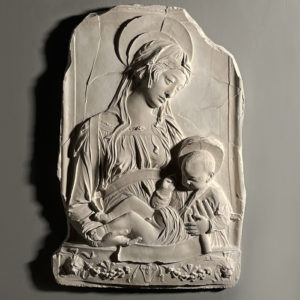
An English cast plaster relief of the Madonna and Child,
£225An English cast plaster relief of the Madonna and Child,
the arched relief cast panel depicting the Virgin and Child, the Holy Mother seemingly sat before a parapet with her head inclined to the Infant as she cradles Him, the parapet ornamented with the arms of the Piccolomini flanked with swagged garlands and ribbon-tied lion-masks,£225 -
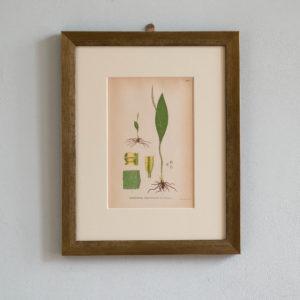
Natural History, Original Fern Prints based on the Work of Carl Lindman. ‘Ophioglossum Vulgatum’.
£220Natural History, Original Fern Prints based on the Work of Carl Lindman. ‘Ophioglossum Vulgatum’.
Carl Axel Magnus Lindman was a Swedish botanist and botanical artist, who published "Bilder ur Nordens Flora" between 1901-1905.£220 -
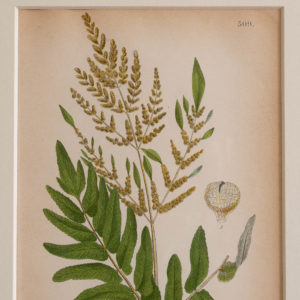
Natural History, Original Fern Prints based on the Work of Carl Lindman. ‘Osmunda Regalis.
£220Natural History, Original Fern Prints based on the Work of Carl Lindman. ‘Osmunda Regalis.
Carl Axel Magnus Lindman was a Swedish botanist and botanical artist, who published "Bilder ur Nordens Flora" between 1901-1905.£220 -
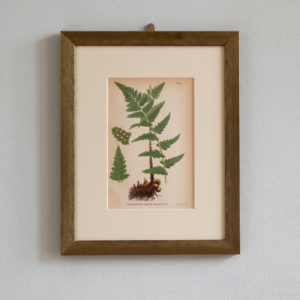
Natural History, Original Fern Prints based on the Work of Carl Lindman. ‘Aspidium Cristatum’,
£220Natural History, Original Fern Prints based on the Work of Carl Lindman. ‘Aspidium Cristatum’,
Carl Axel Magnus Lindman was a Swedish botanist and botanical artist, who published "Bilder ur Nordens Flora" between 1901-1905.£220 -
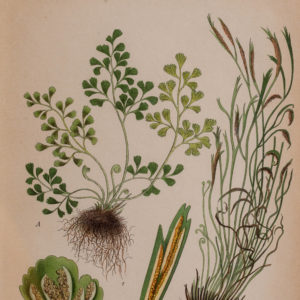
Natural History, Original Fern Prints based on the Work of Carl Lindman. ‘Asplenium Septentrionale’.
£220Natural History, Original Fern Prints based on the Work of Carl Lindman. ‘Asplenium Septentrionale’.
Carl Axel Magnus Lindman was a Swedish botanist and botanical artist, who published "Bilder ur Nordens Flora" between 1901-1905.£220
Featured Items
-
No records found

